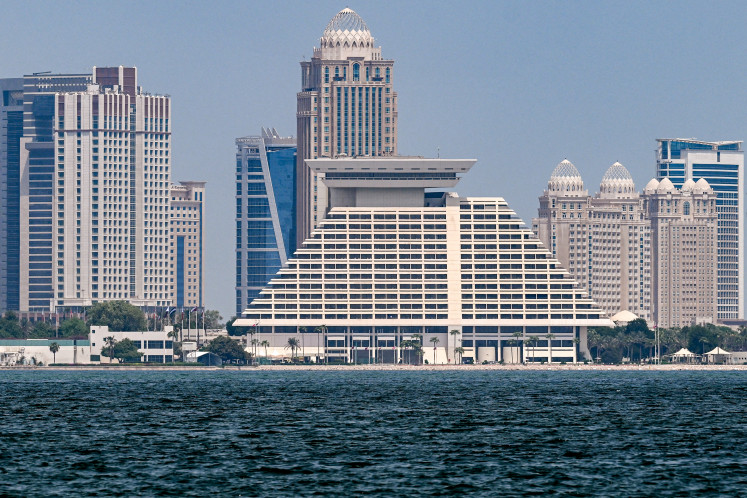Popular Reads
Top Results
Can't find what you're looking for?
View all search resultsPopular Reads
Top Results
Can't find what you're looking for?
View all search resultsWorld's largest iceberg breaks off Antarctica: European Space Agency
Called A-76 and roughly the shape of Manhattan but more than 70 times bigger, it was picked up on satellite images and is "currently the largest berg in the world", the ESA said Wednesday.
Change text size
Gift Premium Articles
to Anyone
 This handout image released by The European Space Agency (ESA) on May 20, 2021, shows a view captured by the Copernicus Sentinel-1 mission of the A-76 iceberg off the Ronne Ice Shelf, in the Weddell Sea, Antarctica taken on March 9, 2021 - combined with a graphic of the Spanish island of Majorca for scale. An iceberg the size of the island of Majorca has broken off from the Ronne ice pack in Antarctica, making it the largest iceberg in existence, according to images from a European Copernicus satellite, the European Space Agency said on May 20, 2021. (AFP/Handout)
This handout image released by The European Space Agency (ESA) on May 20, 2021, shows a view captured by the Copernicus Sentinel-1 mission of the A-76 iceberg off the Ronne Ice Shelf, in the Weddell Sea, Antarctica taken on March 9, 2021 - combined with a graphic of the Spanish island of Majorca for scale. An iceberg the size of the island of Majorca has broken off from the Ronne ice pack in Antarctica, making it the largest iceberg in existence, according to images from a European Copernicus satellite, the European Space Agency said on May 20, 2021. (AFP/Handout)
A
huge iceberg, the world's largest, has broken off from an ice shelf in Antarctica and is floating through the Weddell Sea, the European Space Agency said.
Called A-76 and roughly the shape of Manhattan but more than 70 times bigger, it was picked up on satellite images and is "currently the largest berg in the world", the ESA said Wednesday.
The iceberg is around 170 kilometres (105 miles) long and 25 kilometres wide, with an area of 4,320 square kilometres, slightly larger than the Spanish island of Majorca.
The berg, which broke off the western side of the Ronne Ice Shelf, was originally spotted by the British Antarctic Survey and confirmed using images from the Copernicus satellite.
It takes the place as the world's largest from the A-23A iceberg -- approximately 3,880 sq km in size -- which is also in the Weddell Sea.
In November last year, what was then the world's largest iceberg appeared to be on a collision course with a remote South Atlantic island home to thousands of penguins and seals, threatening to impede their ability to gather food.
The iceberg, known as A68a, had also broken off from the Larsen Ice Shelf, which has warmed faster than any other part of Earth's southern most continent.
A68a, which was 160 kilometres long and 48 kilometres across, broke up before it could cause any damage to the abundant wildlife in the British Overseas Territory of South Georgia.
Earth's average surface temperature has gone up by one degree Celsius since the 19th century, enough to increase the intensity of droughts, heat waves and tropical cyclones.
But the air over Antarctica has warmed more than twice that much.










